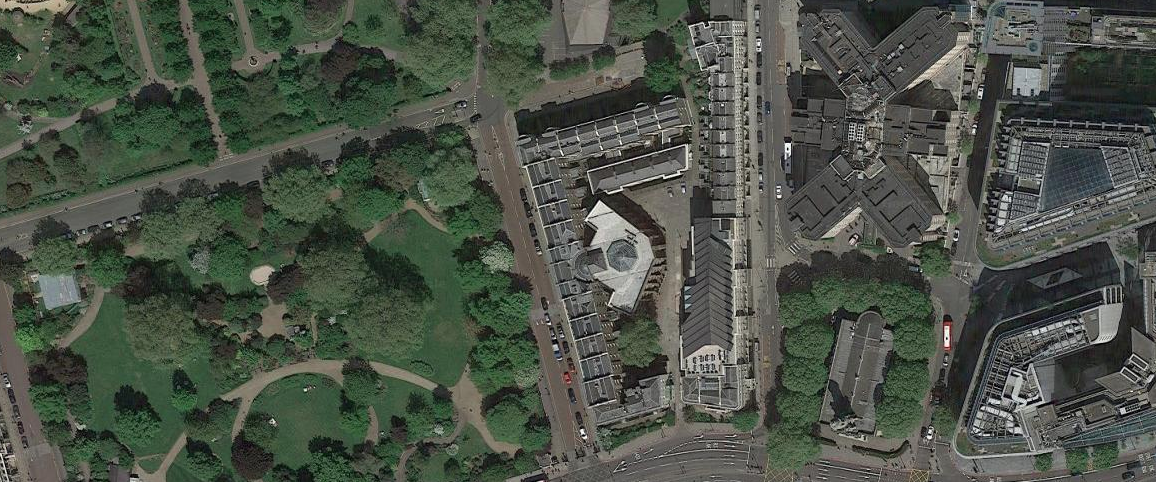London, Vol 6, edited by Charles Knight, 1844. CXLIII: Exhibitions of Art by J. Saunders. p283 – 285. Excerpt.

The eye witness account of J. Saunders.
(…) let us pay our two shillings in the vestibule of the exhibition, ascend the stairs, and submit ourselves to the guidance of the attendant waiting to receive and conduct us to a seat through the darkness-visible of the theatre, into which we enter; a precaution rendered necessary by the transition from light to gloom, which at first almost incapacitates us for the use of our own eyes.
In front opens, receding apparently like the stage of a theatre, a view of the beautiful basilica or church of St. Paul, with its range of delicate pillars and small Moorish-like connecting arches at the top, over which again the entire flat surface of the wall appears covered with beautiful paintings, now lit up by the radiance of the moon streaming in through the windows on the opposite side.
…
But as we gaze – the dark cedar roofs disappears, and we see nothing but the pure blue Italian sky, whilst below, some of the pillars have fallen – the floor is covered with wrecks; the whole, in short, has almost instantaneously changed to a perfect and mournful picture of the church after the desolation wrought by the fire.
A bell now rings, we find ourselves in motion; the whole theater in which we sit, moves round till its wall closes the aperture or stage, and we are in perfect darkness; the bell rings again, a curtain rises, and we are looking on the time-worn towers, transepts, and buttresses of Notre Dame, its rose window on the left, and the water around its base reflecting back the last beams of the setting sun.
Gradually these reflections disappear, the warm tints fade from the sky, and are succeeded by the cool grey hue of twilight, and that again by night – deepening by insensible degrees till the quay and the surrounding buildings and the water are no longer distinguishable, and Notre Dame itself scarcely reveals to us its outlines against the sky.
Before we have long gazed on this scene the moon brings to emerge slowly—very slowly, from the opposite quarter of the heavens, its first faint rays tempering apparently rather than dispersing the gloom; presently a slight radiance touches the top of one of the pinnacles of the cathedral—and glances as it were athwart the dark breast of the stream; now growing more powerful, the projections of Notre Dame throw their light and fantastic shadows over the left side of the building, until at last, bursting forth in serene unclouded majesty, the whole scene is lit up, except where the vast Cathedral interrupts its beams, on the quay here to the left, and where through the darkness the lamps are now seen, each illumining its allotted space.
Hark! The clock of Notre Dame strikes! and low and musical come the sounds – it is midnight – scarcely has the vibration of the last note ceased, before the organ is heard, and the solemn service of the Catholic church beings – beautiful, inexpressibly beautiful – one forgets creeds at such a time, and thinks only of prayer: we long to join them.
And yet all this is illusion (the sounds of course excepted) – a flat piece of canvas, with some colors distributed upon it, is all that is before us; though where that canvas can be, it seems, to one’s eyes at least, impossible to determine; they cannot by any mental processes be satisfied that buildings, distance, atmosphere are not before them – to such perfection has the Diorama been brought.
Note: the eye witness account is likely from before 1844, the publication date of this piece. In 1844, the original diorama phenomenon was in decline due to the subsequent rise of photography, including portable special effects devices such as the stereoscope. In 1839, Daguerre was working on his photographic invention, the Daguerreotype.

